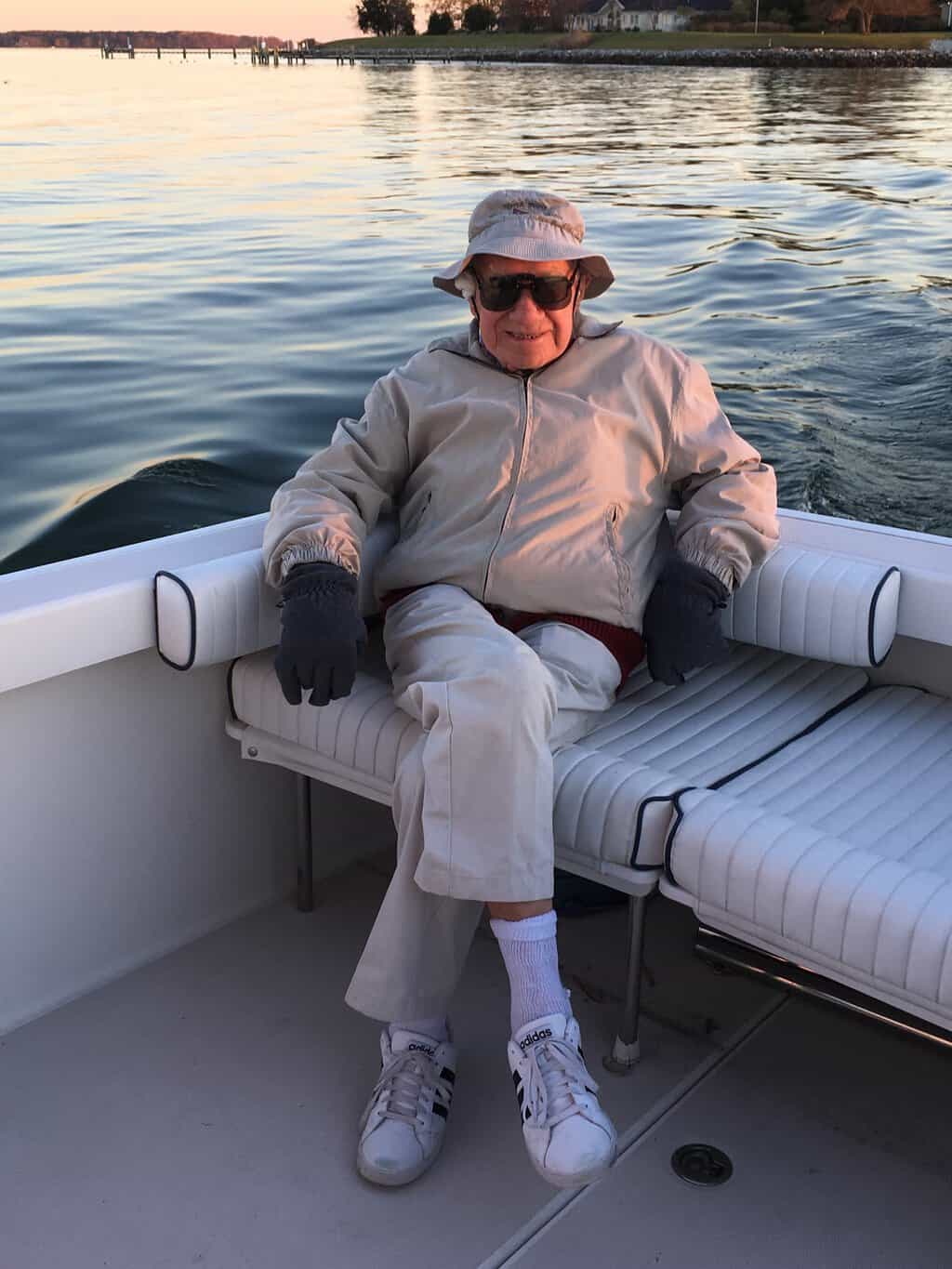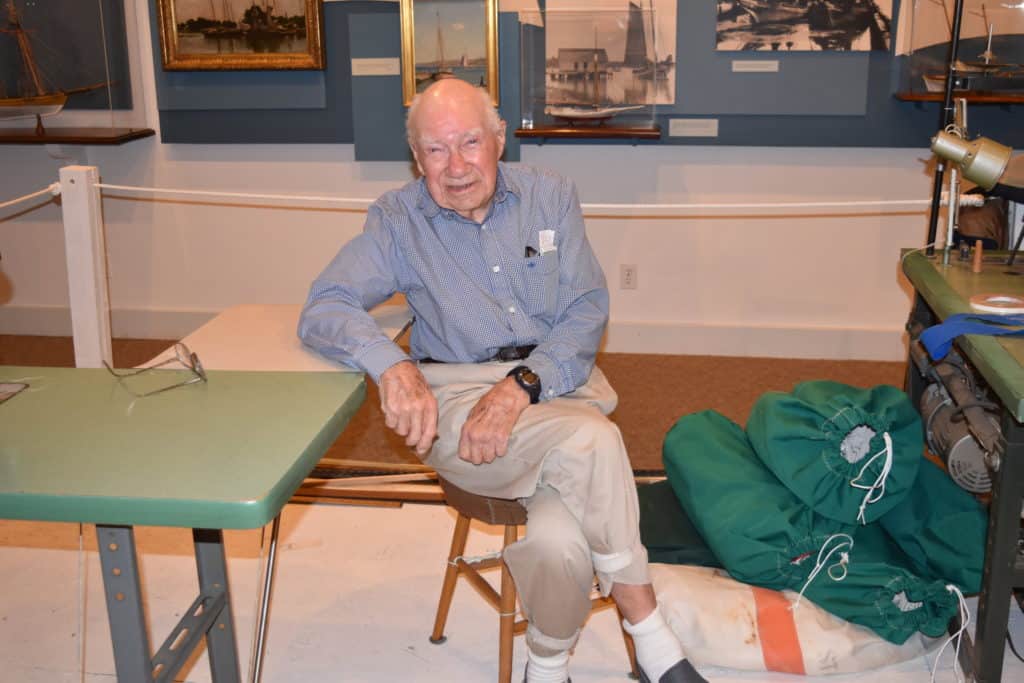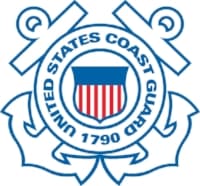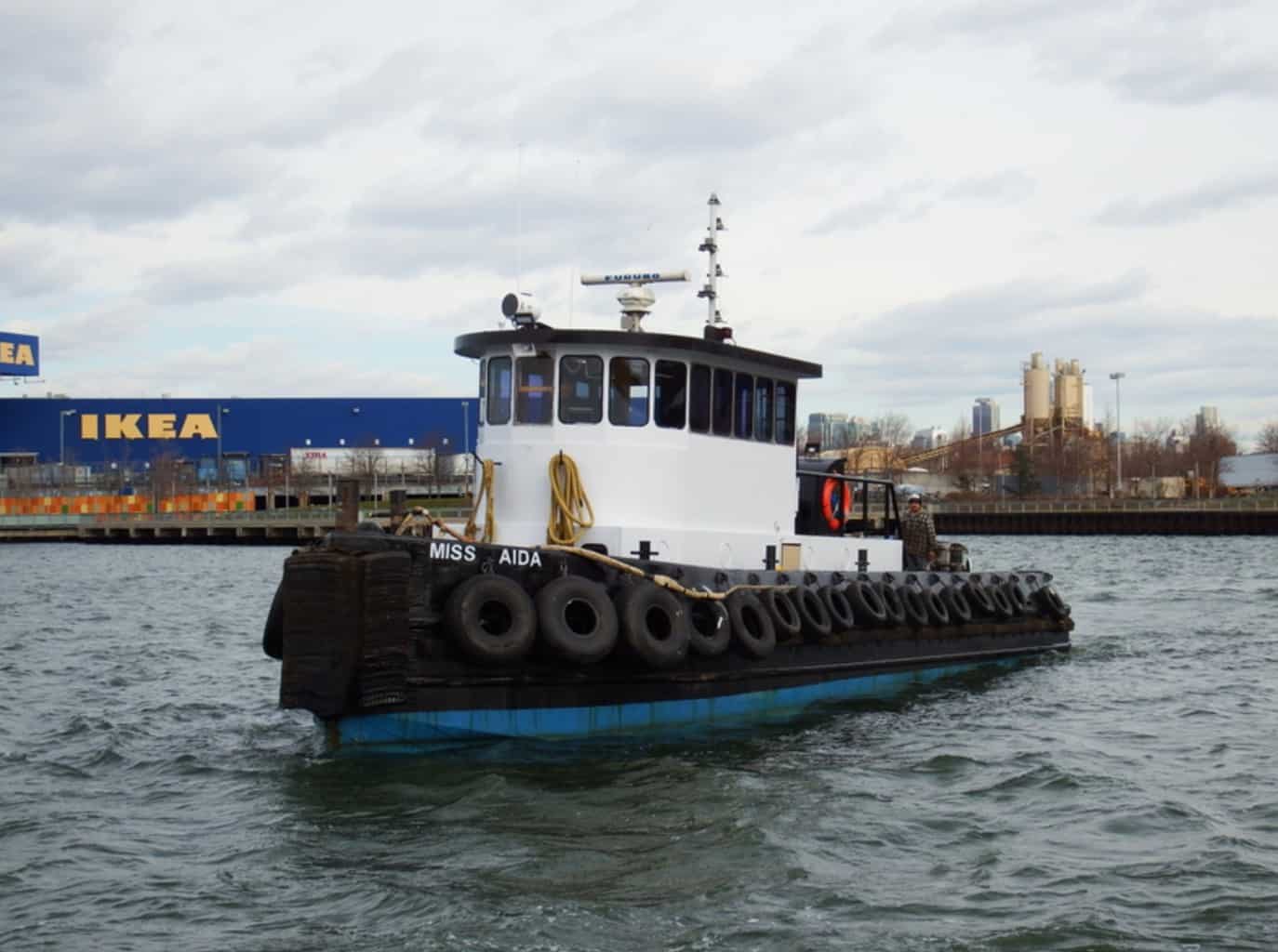Chesapeake Bay Magazine and Bay Bulletin join Chesapeake Bay Maritime Museum in mourning the loss of their longtime volunteer, well-known sail maker Dudley Boycott, who passed away Sunday. Below, we share the museum’s own remembrances of Dudley and his impact on the Bay.
By Tracey Johns and Bethany Ziegler, Chesapeake Bay Maritime Museum
“It started as a hobby, but then I began to find out I could actually make some money doing it,” recalled Chesapeake Bay sail maker Dudley Boycott in a recent interview with the Chesapeake Bay Maritime Museum, where he donated his sail making equipment after nearly 60 years of yacht canvas work.
At the age of 95, Boycott remained active as a volunteer at CBMM just weeks before his passing on Sept. 16, 2018.
Boycott first got involved with sail making in the 1950s after purchasing a Flying Dutchman with cotton sails from the Netherlands. Wanting to switch to something synthetic, he bought a 107 Singer sewing machine and got in touch with a friend named Harry Young, who owned a boatyard with a mold loft. Young was in the process of building a 37-foot motorsailer at the time, and offered Boycott the space once he was finished.
By 1966, Boycott had made enough money from sail making to support his family’s cruising habits, and to fulfill his dream of having a sail loft in the basement of his Baltimore County house. Retired from a long career at Bethlehem Steel, Boycott moved to St. Michaels, Md. in 2016, where he could be closer to his daughter.

Part of Boycott’s recent donation to CBMM was a set of eight books containing detailed notes about each sail he made in his home sail loft—about 1,300 of them. And that number doesn’t account for the sails he made in Young’s boatyard; Boycott estimates he made about 150 or so sails there that he didn’t record.
“Dudley’s equipment helped to launch the beginnings of our new sail loft,” said CBMM Shipyard Program Manager Jenn Kuhn, who worked closely with Dudley in the most recent years. “His gift allowed more participants the opportunity to learn sail making techniques with us. It also helped us to better manage our own canvas needs.”
“Dudley represents the last of the traditional sail makers on Chesapeake Bay,” commented CBMM President Kristen Greenaway. “So, you can imagine, his donation was extremely important to CBMM and our commitment to expand our educational programs and shipyard capabilities. Dudley’s legacy will be carried with every child, apprentice, and guest who holds his tools in their hands, now and into the future.”
A CBMM member when CBMM first opened in 1965, Boycott said he and his wife used to sail over to St. Michaels from the boatyard in Baltimore’s Lodge Forest.
Most recently, Boycott volunteered at CBMM’s sail loft on a weekly basis. He rode his bike to CBMM, a two-mile journey each way, “when the weather lets me,” he said. His work included making sail bags and an awning; a staysail for CBMM’s log canoe Bufflehead; a sail for the Acorn skiff Feather, recently built by the museum’s Apprentice for a Day participants; and sail covers for the skipjack Rosie Parks and Smith Island skiff Volunteer.
As for his favorite part of volunteering at CBMM, Boycott pointed to what he’s most familiar with—canvas work.
“I don’t know about helping any other way,” he said.




